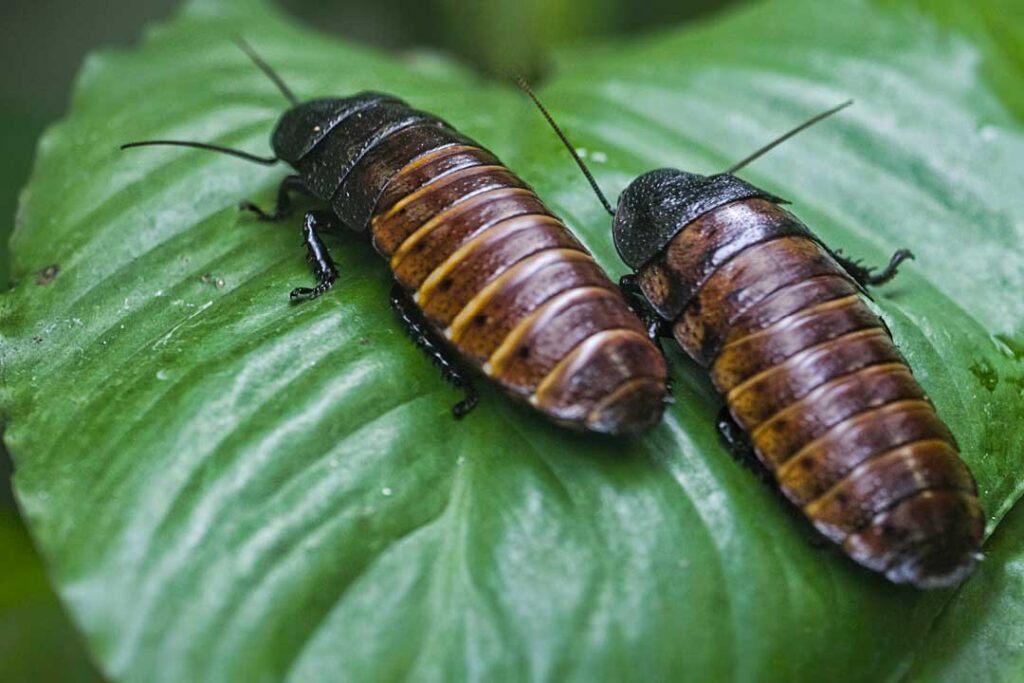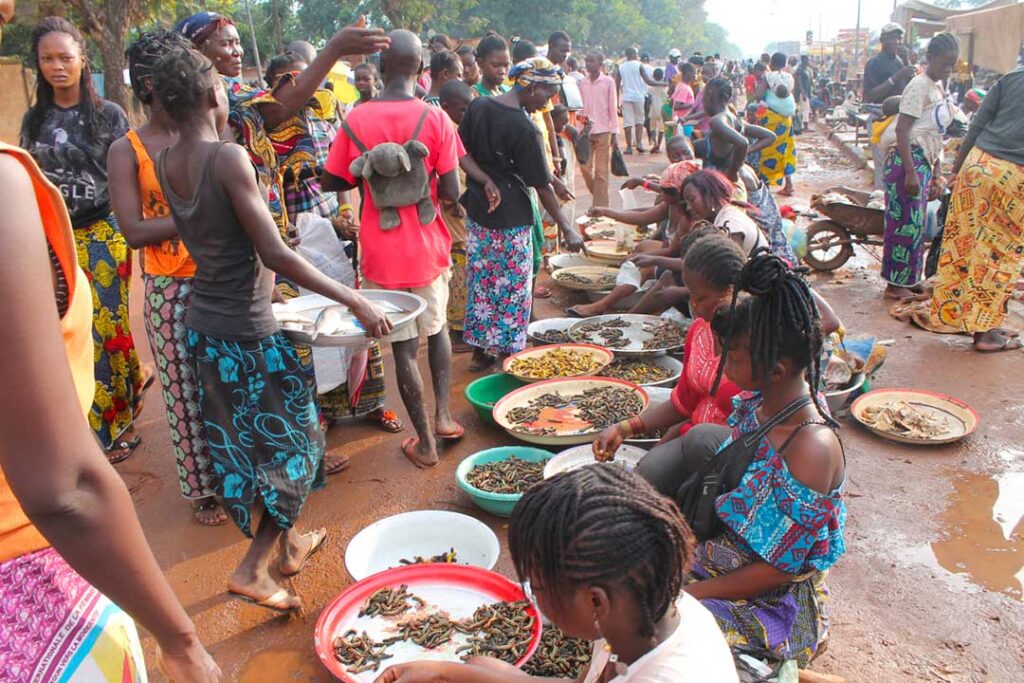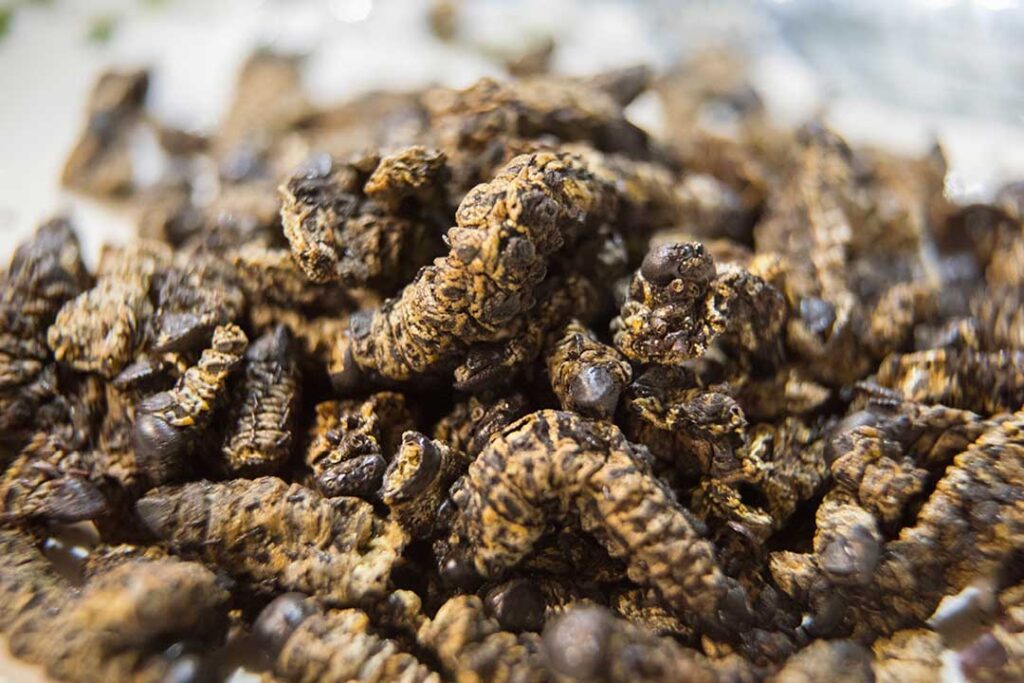It was more of a challenge chewing the hard carapace of the palm-sized Madagascar hissing cockroach than swallowing it. That, strangely enough, elicited a pleasant chocolaty taste—not that anyone I have told about this experience even faintly believes me.
Yet pre-Columbian insect tucker, as eaten by ancient Aztecs and Mayans—cockroaches, spiders, scorpions, worms, grasshoppers, and so forth—is pretty standard fare that one can find in food markets, even in a giant modern metropolis like Mexico City.
Ant-eggs are an Aztec delicacy and taste like pomegranate, but my personal favourite is a taco filled with slices of fresh avocado topped with dried grasshoppers and sprinkled with the real hot zing delivered by a salsa made from tics.

Again, there are no takers among anyone I describe this to. But insect foods, in recent decades the exclusive preserve of traditional cultures or tourists on a dare, are busy making a serious comeback, not only as a viable alternate protein source to beef, pork, chicken and fish, but as haute cuisine too.
Actually, little of this is new: fully a quarter of the world’s eight billion people, mostly in Africa, Asia, and Latin America, already supplement their diets with more than 1,900 species of insects—beetles constituting almost a third—and their cousins such as spiders, solifugids, and scorpions. Most of these are wild-gathered; it’s the industrial farming idea that is novel.
Yet this potential to address food insecurity was only recognised at an international level by the UN’s Food and Agricultural Organisation (FAO) 20 years ago, when it initiated research into the uses of what it terms “mini-livestock”. This was against a backdrop where populations were, and are, rising, threatening “scarcities of agricultural land, water, forest, fishery and biodiversity resources, as well as nutrients and non-renewable energy, are foreseen.”

The advantages of edible insects include that they “contain high-quality protein, vitamins and amino acids for humans. Insects have a high food conversion rate, for example, while crickets need six times less feed than cattle, four times less than sheep, and twice less than pigs and broiler chickens to produce the same amount of protein. Besides, they emit fewer greenhouse gases and ammonia than conventional livestock. Insects can also be grown on organic waste.”
In a perfect circle, larvae can eat such waste and in turn, be harvested for animal feed, the animals producing more biowaste for insect consumption. Insects require far less land, water, and other scarce resources to cultivate, and farming them is cheaply accessible to marginalised communities, including rural women, landless people, and the urban poor.
For malnourished children, they promise a higher dose of fatty acids than those provided by fish, and are also rich in fibre and micro-nutrients such as copper, iron, magnesium, manganese, phosphorous, selenium and zinc. They are also less likely, in a post-Covid world, to transmit species-jumping zoonotic diseases.
There are challenges in industrialising production, as discovered by a University of Copenhagen exploratory “GREEiNSECT” project, partnering with the Jomo Kenyatta University of Agriculture and Technology and others in Kenya, that started in 2014. These challenges revolve largely around how to sustain the productiveness and weight gain of mass-rearing harvests. Other threats include the depopulation of useful insect populations (despite their critical plant pollination function, bees are widely consumed globally), as well as the introduction of invader species by bug farmers. Food health and other policy and regulatory authorities are scrambling to catch up.

But in 2018, the projects’ partners in Kenya discovered “a new, previously undescribed edible cricket with great promise for mass production for human consumption and inclusion as an alternative protein ingredient in animal feeds.”
Things have now moved to the point that Montreal in Canada last year hosted the fourth Insects to Feed the World international summit, with 58 countries represented. There, Dr George Sekonyana, backed by South Africa’s National Research Foundation, presented a paper on the sustainability of the informal cross-border trade in edible mopane worms, arguing that traditional ecological farming processes were bedevilled by regulatory inflexibility.
The sadly defunct pan-African innovation journal Ogojiii carried several insect recipes in a 2016 article, including sushi given crunch by fried mealworms; by then, even snooty French foodies like the 1895-founded Le Cordon Bleu cooking school were sampling creepy-crawly cuisine. Looking forward, the transmutation of the continent’s biblical horror locust plagues into a bio-friendly African industry that nourishes millions of lives is the next food frontier.

Michael Schmidt is a Johannesburg-based investigative journalist who has worked in 49 countries on six continents. His main focus areas as an Africa correspondent for leading mainstream journals are emerging and high-end technologies, political developments, conflict resolution and transitional justice, and on the continent’s maritime and littoral spaces.


